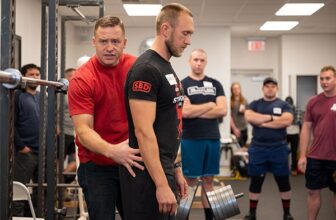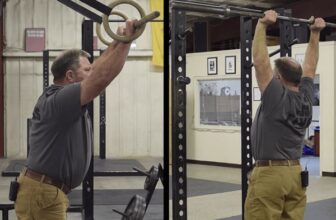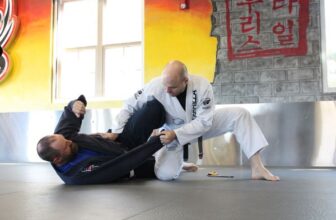
[adinserter block=”2″]
Core and ab training are typically used interchangeably to describe working the stomach area. Contrary to belief though, the core and ab are actually not the same, and refer to different areas. Hence, if you want to focus on the abs and focus on the core, then you need to implement specific movements for each.
First, let’s start with the abdomen. It’s the exterior group, made up of three layers, of muscles on your midsection that you can see and contain four major muscles:
When people refer to ab training, they are training this specific area:
Rectus abdominis
This is the long, flat vertical muscle that runs down your abdomen and is what gives you that ‘six-pack’—what most people try to train to achieve. It’s located between the fifth, sixth and seventh rib and pubic bone and is designed for trunk flexion, that is, moving the trunk and flexing the spine.
So now we’ve gone through the abdomen and what is worked during ab training, it’s time to move onto the core. While the rectus abdominis is a part of the core, it’s not the only thing. The core actually covers 29 muscles in the body such as the pelvic floor and diaphragm. The core is the link between your upper and lower body and is the foundation in which you perform all movements. It also involves these three other major muscles:
External oblique
You have external obliques on either side of your abdomen, from the lower half of your ribs down to your pelvis. They run diagonally and are in charge of twisting the trunk. The external obliques are what you use to rotate your body (the right oblique being engaged to turn your body to the left and vice versa).
Internal oblique
The internal oblique also runs diagonally in the abdomen and is broad and thin. This pair of muscles sit just inside the hip bones. It works with your external oblique to rotate and twist the trunk.
Transverse abdominis
The transverse abdominis is the deepest muscle in the abdomen, with its fibers extending horizontally around the trunk. It works to contain organs and stabilizes the trunk. Just think similarly to a coset or weight belt.
Training your core and training your abs are similar but require different exercise movements to each other.
Core training
To train your core, you’re going to want to do exercises that stabilize the trunk. This way, you can build on a strong, solid core foundation that stabilizes the body and engages the back muscles as well. It means working on bracing and keeping your spine safe when performing exercises.
While you would work your core in other exercises such as the squat and deadlift, it’s also a good idea to include direct core work in your fitness routine. Core training involves mostly isometric exercises, that is, the ones where you hold a position for a period of time. There typically is minimal movement, if at all.
Some exercise include:
Plank: The plank is a classic core movement for a reason. It forces you to engage your core by pulling your belly button towards your spine and maintaining a straight back to keep stable and balanced. Hold the plank for a period of time, starting with 30 seconds then slowly increasing, for a simple yet effective core exercise.
Side plank: This is great to work on your core but involve the obliques. By positioning your body for this core stabilizing movement at one side at a time, you’ll be specifically engaging the obliques and strengthening this part of the core.
Dead bug: There are different variations to the dead bug. All involve maintaining an even spinal and pelvic posture to engage the core. It works to strengthen the mid section and build a strong, solid foundation.
Contrary to the core, ab training consists of shortening the abs in movements that specifically target the rectus abdominis, i.e. the six pack area. Think about ab exercises that contract the mid section such as:
V-ups: The V-up predominantly uses the rectus abdominis, so it’s a great and challenging exercise to do if you’re looking to get a six-pack. It uses this area to lift your upper and lower body up in a V-shape before going back down to the floor again.
Reverse crunch: Again, this is great if you want to focus on the rectus abdominis and is an easier version of the V-up.
[adinserter block=”2″]
Credit : Source Post






